Mastering the art of storing outdoor cushions guarantees their durability and visual appeal. Regular cleaning, using manufacturer-recommended solutions and ensuring thorough drying , prevents mold and mildew. Employing ideal storage techniques by choosing climate-controlled spaces or breathable fabric covers, and elevating cushions to avoid moisture. Implementing moisture-absorbing materials and dehumidifiers in storage areas to maintain the right humidity levels. Moreover, safeguard your cushions from pests by keeping storage areas clean and pest-free. Proper handling and storage prolong your cushions' lifespan and maintain their quality. Insights into more nuanced preservation techniques await those who explore further.
Importance of Proper Cleaning
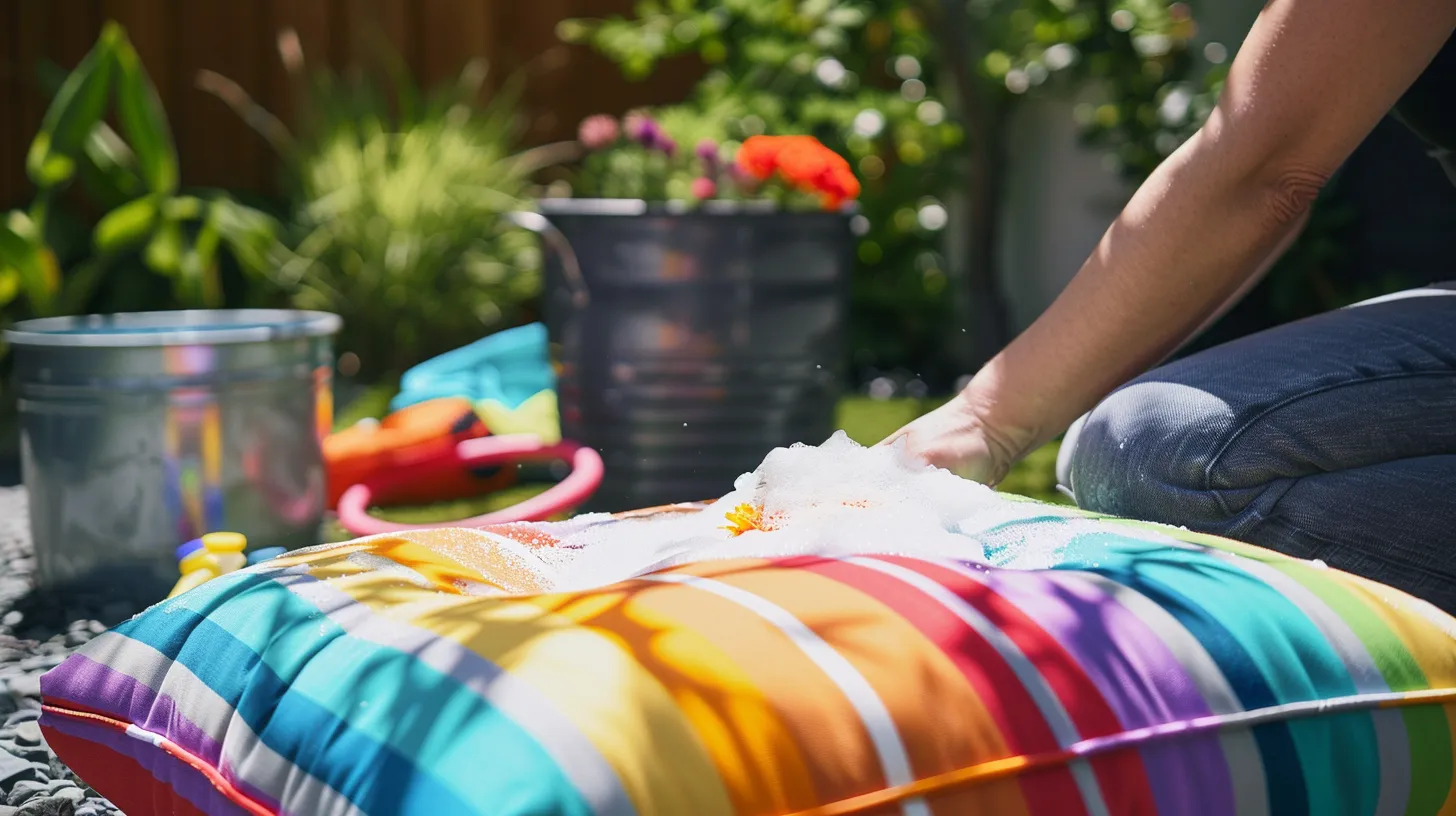
Maintaining the cleanliness of outdoor cushions is essential in preventing the growth of mold and mildew , thereby preserving both their function and aesthetic appeal. Regular cleaning not only addresses dirt and debris but also combats the damp conditions that foster mold and mildew. Adhering to manufacturer cleaning instructions is important for applying the correct methods and solutions, such as white vinegar or a diluted bleach solution , to different types of cushion materials without causing damage.
Effective maintenance involves more than just spot cleaning; it includes thorough drying of cushions to prevent moisture from becoming trapped within the material, which can exacerbate mold issues. Diligent drying after washing plays a significant role in the longevity and preservation of outdoor cushions. Particularly before storage, ensuring cushions are completely dry can prevent the onset of mold and mildew during periods of non-use.
Effective Fabric Cushion Cleaning
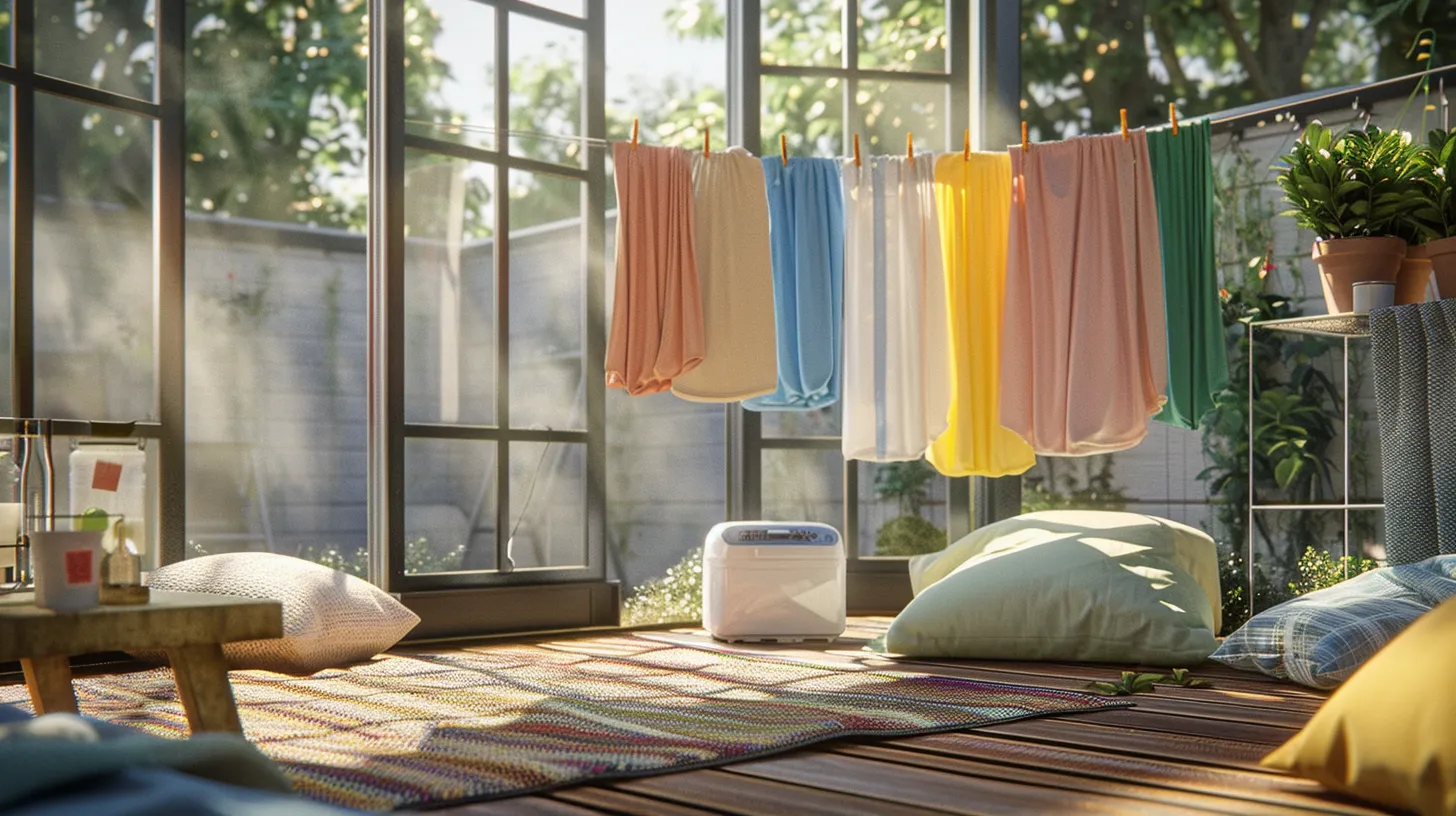
To guarantee effective fabric cushion cleaning , always follow the manufacturer's washing instructions . This foundational step ensures the longevity and aesthetic appeal of the cushions by using methods and products approved for the specific fabric type.
Before applying any cleaning solutions, it's wise to vacuum cushions thoroughly . This removes surface debris and prevents dirt from embedding deeper into the fabric during the washing process, facilitating a more thorough cleaning.
For tackling stubborn stains, consider using natural agents like white vinegar or a solution of diluted bleach, depending on the fabric's colorfastness and resistance. Apply these solutions sparingly and spot-test in an inconspicuous area to make sure they do not damage the fabric. After treating the stains, gently clean the entire surface to maintain uniform color and texture.
Post-cleaning, it's important to remove excess moisture promptly . This step is crucial to prevent mold and mildew , which thrive in damp environments. Allow the cushions to air dry completely in a well-ventilated area before returning them to use or storage. Such meticulous drying practices not only preserve the integrity of the fabric but also enhance the overall effectiveness of your fabric cushion cleaning routine.
Techniques for Moisture Removal
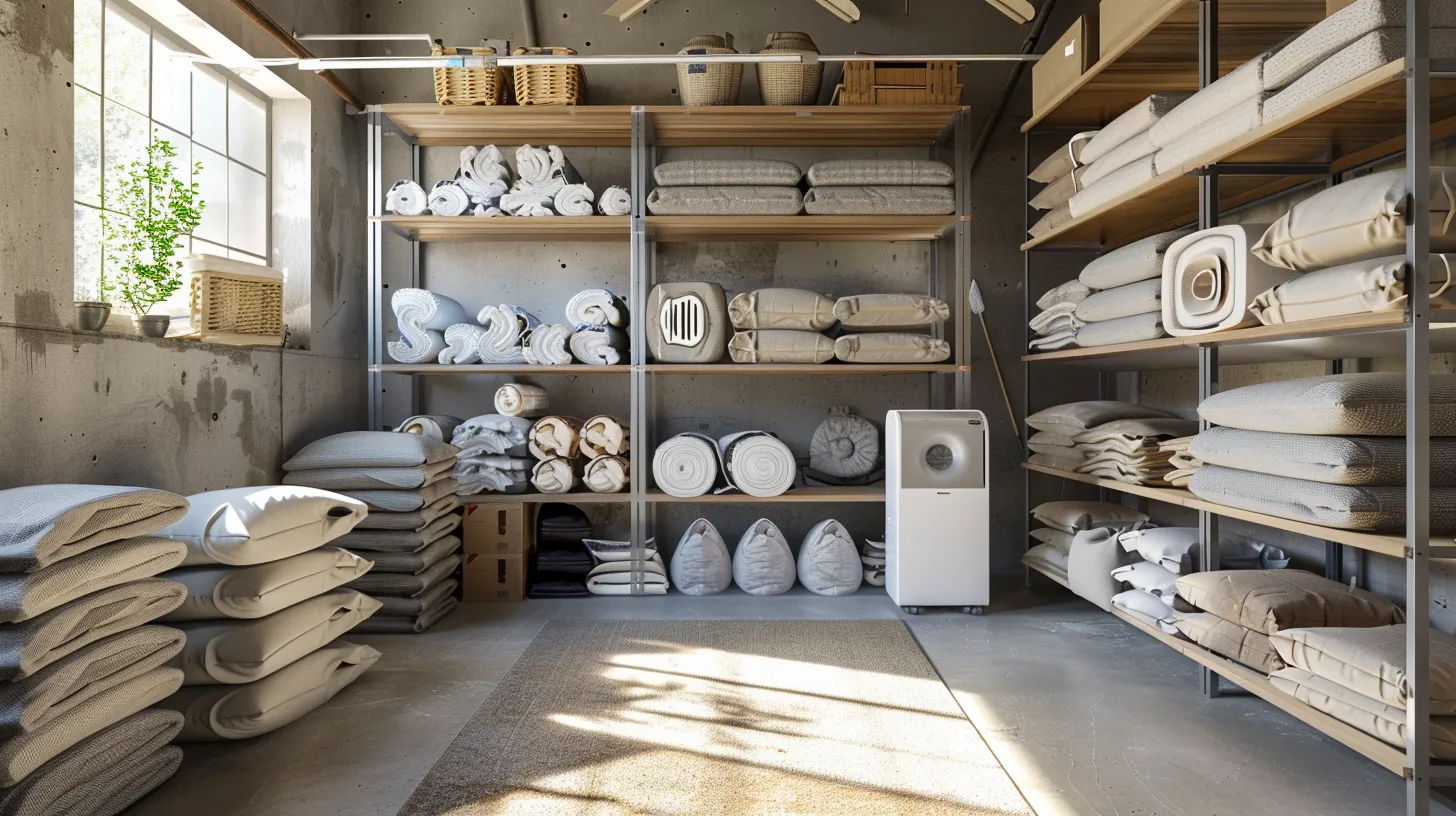
Removing moisture effectively is essential for preserving the quality and longevity of outdoor cushions during storage. Moisture removal is a pivotal step to prevent mold and guarantee the durability of outdoor furnishings. One effective moisture management strategy is the use of moisture-absorbing packets within storage containers. These packets help maintain a dry environment, greatly aiding dampness prevention and mold growth .
Furthermore, it is vital to regularly inspect cushions for any signs of moisture accumulation and address promptly if any is found. The presence of moisture can quickly lead to mildew and mold, which are detrimental to both the health of the users and the fabric of the cushions themselves.
Installing a dehumidifier in the storage area can also greatly assist in maintaining ideal humidity levels , ensuring the atmosphere within the storage space remains sufficiently dry. Additionally, selecting a dry location for storage, away from potential water sources, is crucial. This precaution helps in minimizing the risk of moisture damage from external elements.
Indoor Storage Solutions
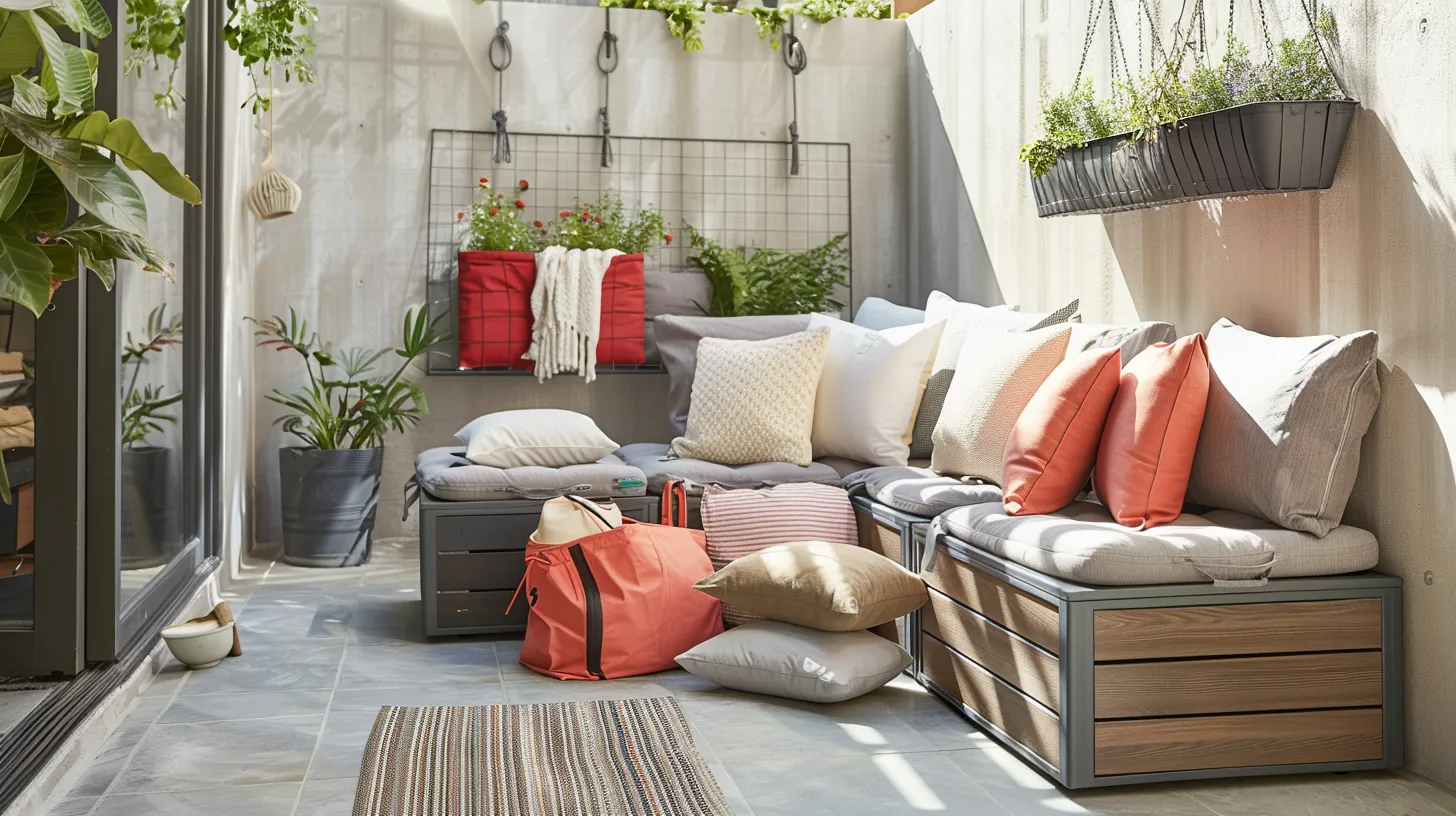
After addressing moisture removal, another effective strategy for cushion longevity involves exploring various indoor storage solutions. Ideal storage locations such as a climate-controlled storage unit , finished basement , shed, or garage provide the necessary conditions to preserve outdoor cushions. These environments shield the cushions from extreme temperatures and humidity, which are vital for maintaining their quality and preventing degradation.
Elevating cushions off the ground in these indoor spaces is essential. By using pallets, tables, or shelves, you prevent direct contact with potentially damp floors, thus avoiding moisture buildup and deterring pests. This method not only promotes air circulation around the cushions but also contributes significantly to moisture and pest prevention.
Furthermore, the use of breathable fabric bags or protective covers when storing cushions indoors enhances their protection. These covers help maintain the freshness and integrity of the cushions while shielding them from dust and other indoor pollutants. For daily protection, bringing cushions indoors overnight can safeguard them from dew and unexpected weather changes, thereby extending their lifespan and ensuring their readiness for use at any time. Such meticulous care and appropriate indoor storage solutions greatly contribute to the longevity and ongoing appeal of outdoor cushions .
Outdoor Storage Options
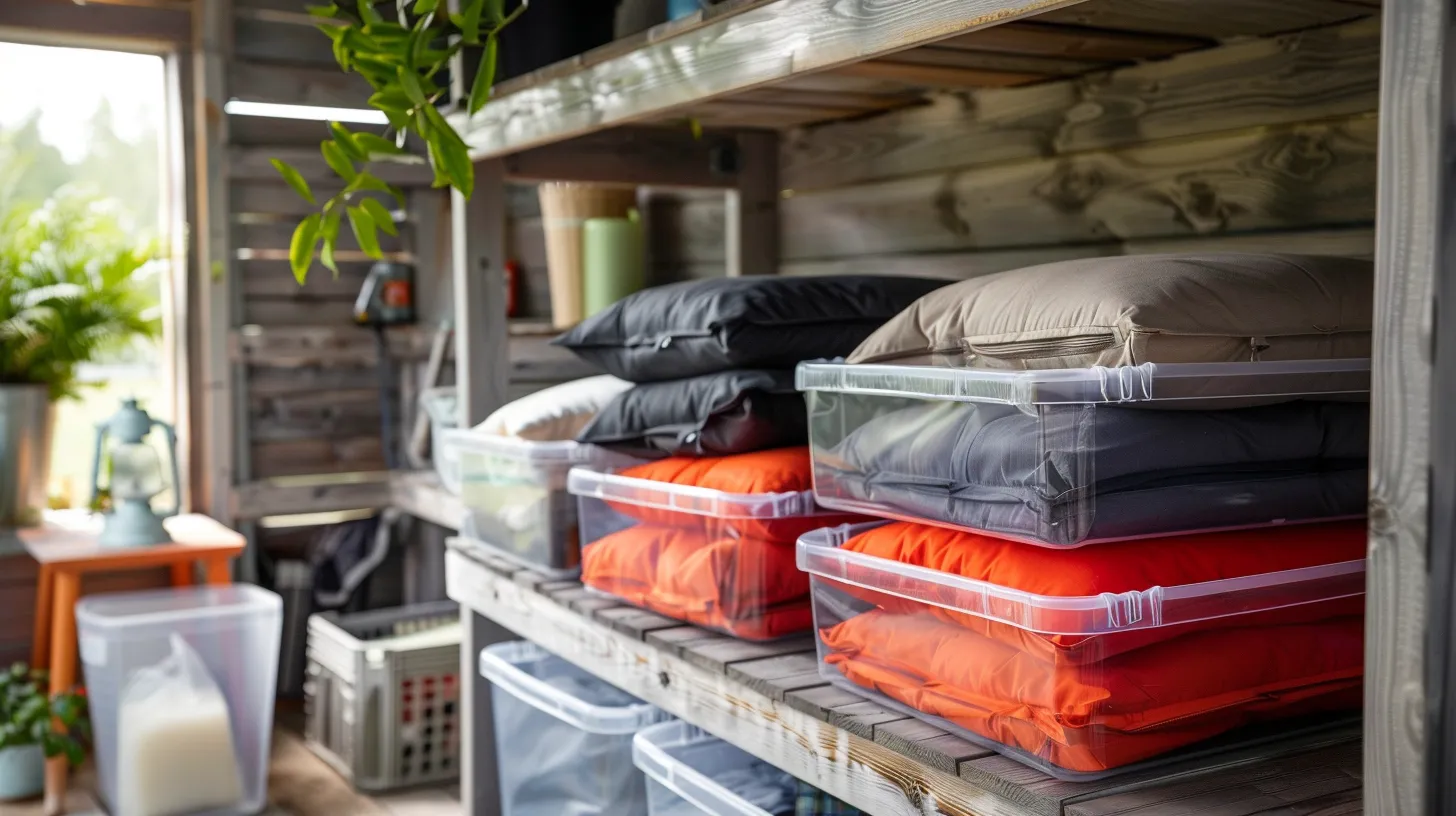
Exploring outdoor storage options for cushions is important for their preservation and accessibility throughout various seasons. Effective outdoor storage solutions include the use of airtight containers , fabric storage bags , and strategically placed tarps that provide protection against the elements. Incorporating moisture-absorbing packets within these storage containers is an essential step in preventing the accumulation of mold and mildew, which can deteriorate cushion quality over time.
Optimal locations for storing outdoor cushions include finished basements , climate-controlled storage units , sheds, or garages. These environments are ideal as they offer a controlled climate that helps maintain the integrity of the cushions. Ensuring that these storage spaces are pest-free is critical to avoid unwanted damage from rodents or insects.
Additionally, it is advisable to store cushions at least six inches off the ground . This practice aids in keeping the cushions dry and further shields them from potential pests. By carefully selecting and utilizing appropriate storage options and practices, the longevity and appearance of outdoor cushions can be greatly enhanced, ensuring they remain in prime condition for future use.
Selecting Suitable Containers

Selecting the right containers for storing outdoor cushions greatly impacts their longevity and protection from environmental factors. Airtight containers , such as plastic bins or specially designed deck boxes, are highly effective for moisture protection and pest prevention. These storage containers seal out dampness and insects, which are primary culprits in the deterioration of cushion quality.
For areas with high humidity, fabric bags are advisable as they provide breathability, preventing the buildup of mold and mildew on the cushions. These bags allow air circulation while offering sufficient protection against dust and pests. Adding an extra layer of protection, tarps or blankets can be wrapped around the cushions before placing them in the containers, serving as protective barriers that further shield the cushions from external elements.
To enhance the effectiveness of these storage solutions, including moisture-absorbing packets within the containers is beneficial. These packets help in maintaining a dry environment, essential for preserving the integrity of outdoor cushions. For thorough climate control in the storage area, employing a dehumidifier can help maintain ideal conditions, ensuring that cushions remain dry and free from mildew throughout their storage period.
Folding and Packaging Methods

Effective folding and packaging methods are essential for maximizing storage efficiency and maintaining the condition of outdoor cushions. When preparing cushions from your patio furniture for storage, it's best to start by ensuring each piece is clean and dry . For square or rectangular cushions , an ideal approach involves folding them in half lengthwise and then horizontally. This method not only conserves space but also helps in maintaining the cushion's shape .
Round cushions should be folded into a semi-circular shape and then folded in half again. This technique allows them to fit more neatly into storage containers, reducing the risk of permanent creases and damage. For cushions with irregular shapes, folding them into thirds or quarters, depending on their size and flexibility, is advisable. This strategy accommodates their unique contours while still optimizing storage space.
Monitoring Moisture Levels
After addressing the proper folding and packaging of outdoor cushions, it's important to focus on the role of moisture control in safeguarding their condition during storage. Monitoring moisture levels is vital to prevent fabric deterioration , unpleasant odors , and mold growth , which can occur when humidity exceeds 60%. A reliable method to track these levels is by using a hygrometer , an instrument that measures the humidity in the air.
Maintaining ideal cushion storage conditions means keeping moisture at bay. Moisture-absorbing packets are highly effective in achieving this. These packets can be placed in the storage area to absorb excess humidity that could otherwise lead to condensation and dampness, potentially harming the cushions. Regular checks for signs of moisture, such as condensation or a general feeling of dampness, are essential.
Proactively managing the humidity within storage environments prevents conditions that favor mold growth and guarantees the longevity of outdoor cushions. By implementing these strategies, cushions will remain in excellent condition, free from the detrimental effects of excessive moisture, ready to be used season after season without the need for costly repairs or replacements.
Implementing Pest Control
Implementing pest control measures is essential for protecting outdoor cushions from insects and rodents during storage. One effective strategy is the use of natural pest repellents such as cedar chips or lavender sachets. These repellents not only deter pests but also impart a pleasant aroma to the cushions, keeping them fresh during long storage periods.
Regular inspection plays a vital role in pest management. It's important to periodically inspect stored cushions for signs of pest activity, including droppings or holes. Detecting infestations early allows for prompt and effective intervention, preventing extensive damage.
To further enhance protection, storing cushions in sealed containers or protective bags is recommended. These barriers deny pests access and provide a physical shield against potential infestations. Additionally, elevating cushions at least six inches off the ground reduces the likelihood of pests reaching them, particularly in garage or shed environments where such risks are elevated.
Lastly, employing weather-resistant materials and protective covers can greatly mitigate pest damage. These materials are less attractive to pests and offer an additional layer of defense, ensuring that your outdoor cushions remain in pristine condition throughout their storage period.
Prolonging Cushion Lifespan
To guarantee the longevity of outdoor cushions, it is crucial to regularly clean and thoroughly dry them before storage. This fundamental step prevents the growth of mildew , which can degrade the fabric and reduce the lifespan of your cushions. Adhering to manufacturers' cleaning instructions ensures that you use the correct methods and products, thereby optimizing the effectiveness of your maintenance efforts.
When selecting a location to store outdoor cushions, opt for a dry, room-temperature environment shielded from direct sunlight . Exposure to UV rays and moisture can accelerate the deterioration of fabrics, leading to faded colors and weakened materials. Using airtight containers , such as plastic bins or deck boxes, provides an additional layer of protection against moisture and pests, further extending the durability of your cushions.
Elevating cushions at least six inches off the ground within these containers can greatly enhance their preservation. This positioning promotes air circulation , preventing the accumulation of dampness and deterring pest infestations. By implementing these strategies, you can effectively prolong the lifespan of your outdoor cushions, ensuring they remain vibrant and supportive for future seasons.










